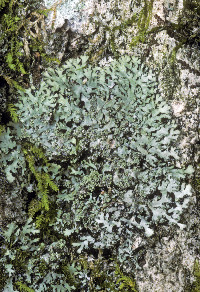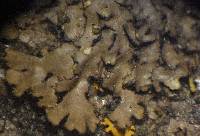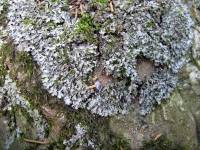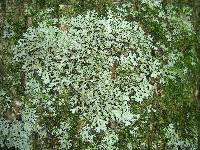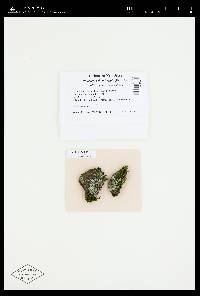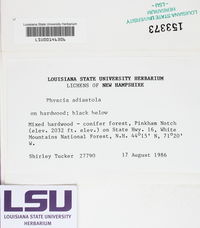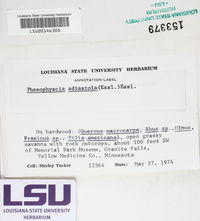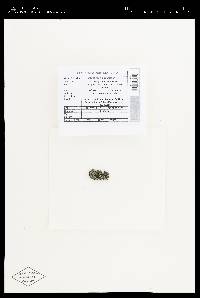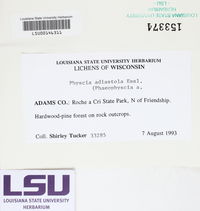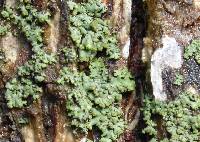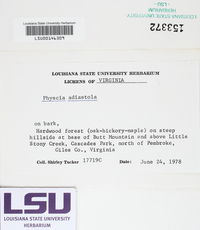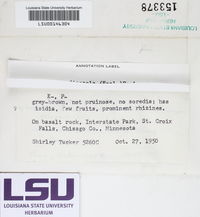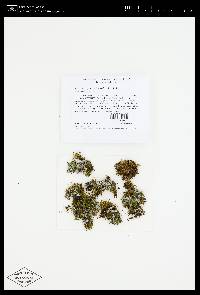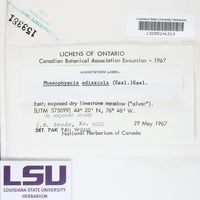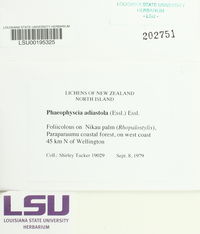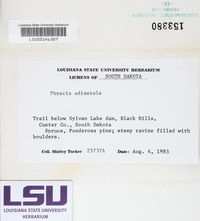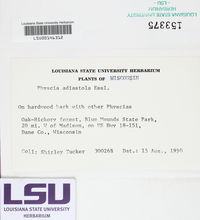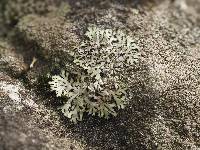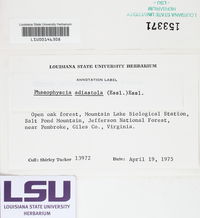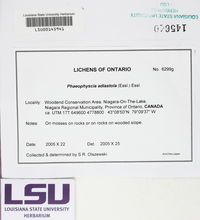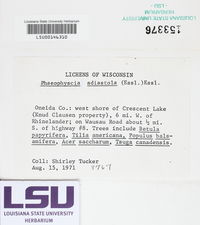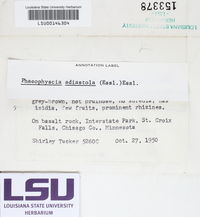
Consortium of Lichen Herbaria
- building a Global Consortium of Bryophytes and Lichens as keystones of cryptobiotic communities -
- Home
- Search
- Images
- Species Checklists
- US States: O-Z >
- US National Parks
- Central America
- South America
- US National Parks
- Southern Subpolar Region
|
|
|
|
Family: Physciaceae
[Physcia adiastola Essl.] |
Nash, T.H., Ryan, B.D., Gries, C., Bungartz, F., (eds.) 2004. Lichen Flora of the Greater Sonoran Desert Region. Vol 2. Thallus: foliose, up to 6 (rarely 10) cm in diam., irregular to orbicular lobes: +linear, truncate or rounded, discrete to somewhat imbricate, 0.5-1.5 mm broad, flat to more often weakly concave, especially at the ends, prostrate upper surface: greenish gray to dark gray or pale brown, epruinose and without distinctive epinecral layer, sorediate soredia: coarsely granular to pseudocorticate and isidioid, often forming piles, in primarily terminal and marginal (rarely laminal), irregular to weakly capitate soralia upper cortex: paraplectenchymatous medulla: white lower cortex: paraplectenchymatous lower surface: black, sometimes paler on the lobe ends, dull or weakly shiny; rhizines: simple, black Apothecia: infrequent (not seen in Sonoran material), up to 3 mm in diam., sessile; margin: thick and usually entire ascospores: ellipsoid to narrowly ellipsoid, 17-23(-25) x 6-10 µm, Physcia-type Spot tests: all negative in cortex and medulla Secondary metabolites: none detected. Substrate and ecology: bark or rock, or over mosses on rock World distribution: North America (primarily eastern) and East Africa Sonoran distribution: mountains of Arizona above c. 1600 m. Notes: Phaeophyscia adiastola has its primary distribution in eastern North America, where it is one of the more common members of the genus. It appears to be rare in the West, to date known from only four localities in the Sonoran region, and also from British Columbia. This species was long confused with P. orbicularis, which is similar in size but is distinguished by its finer soredia, and primarily laminal (and submarginal) soralia. Particularly large specimens of P. adiastola, because of its very granular soredia and often conspicuous rhizines, may be confused with P. hispidula, but that species is generally larger, and has broader and more distinctly concave lobe ends with at least some rhizines along the margins that project upward. |
|
|
|
Powered by Symbiota



